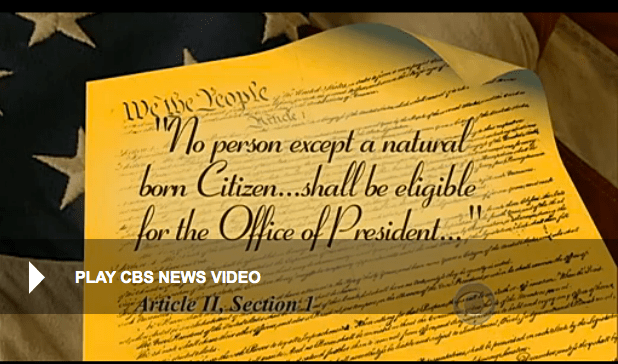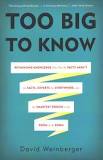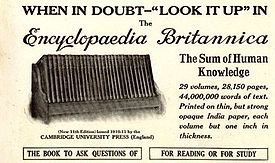Maybe not now. But soon.
Turns out, facts are like radioactive materials, and, for that matter, like anything that’s not going to last forever.
 More or less, this is half-life principle, developed just over 100 years ago by Ernest Rutherford, applies to facts, or, at least, a great many facts. This persuasive argument is set forth by Samuel Arbesman in a new book called The Half-Life of Facts. I especially like the sub-title: “What Everything We Know Has an Expiration Date.” Arbesman is a math professor and a network scientist, and, as you would expect, this is a smart book. The book seems more like a musing than a fully worked-out theory, but I suspect that’s because facts are not easy to tame. Herding facts is like herding cats.
More or less, this is half-life principle, developed just over 100 years ago by Ernest Rutherford, applies to facts, or, at least, a great many facts. This persuasive argument is set forth by Samuel Arbesman in a new book called The Half-Life of Facts. I especially like the sub-title: “What Everything We Know Has an Expiration Date.” Arbesman is a math professor and a network scientist, and, as you would expect, this is a smart book. The book seems more like a musing than a fully worked-out theory, but I suspect that’s because facts are not easy to tame. Herding facts is like herding cats.
 Let’s begin with “doubling times”–the amount of time it takes for something (anything) to double in quantity. The number of important discoveries; the number of chemical elements known; the accuracy of scientific instruments–these double every twenty years. The number of engineers in the U.S. doubles every ten years. Using measures fully detailed in the book, the doubling time for knowledge in mathematics is 63 years, in geology it’s 46 years. In technology knowledge, half lives are quiet brief: a 10 month doubling for the advance of wireless (measured in bits per second), a 20 month doubling time for gigabytes per consumer dollar. With sufficient data, it’s possible to visualize the trend and to project the future.
Let’s begin with “doubling times”–the amount of time it takes for something (anything) to double in quantity. The number of important discoveries; the number of chemical elements known; the accuracy of scientific instruments–these double every twenty years. The number of engineers in the U.S. doubles every ten years. Using measures fully detailed in the book, the doubling time for knowledge in mathematics is 63 years, in geology it’s 46 years. In technology knowledge, half lives are quiet brief: a 10 month doubling for the advance of wireless (measured in bits per second), a 20 month doubling time for gigabytes per consumer dollar. With sufficient data, it’s possible to visualize the trend and to project the future.
So that’s part of the story. Of course, it’s one thing to know something, and it’s another to disseminate that information. As the speed of communication began to exceed the speed of transportation (think: telegraph), transfer of knowledge in real time (or, pretty close to real time) became the standard. But not all communications media is instantaneous. Take, for example, a science textbook written in 1999. The textbook probably required several years of development, so let’s peg the information in, say, 1997. If that textbook is still around (which seems likely), then the information is 16 years old. If it’s a geology text, the text is probably valid, but if it’s an astronomy text, Pluto is still a planet, and there are a lot of other discoveries that are absent. And, there are facts rapidly degrading, some well past their half life.
And, then, of course, there are errors. Sometimes, we think we’ve got it right, but we don’t. Along with the dissemination of facts, our system of knowledge distribution transfers errors with great efficiency. We see this all the time on the internet: a writer picks up old or never-accurate information, and republishes it (perhaps adding some of his or her own noise along the way). An author who should know better gets lazy and picks up the so-called fact without bothering to double check, or, more tragically, manages to find the same inaccurate information in a second source, and has no reason to dispute its accuracy. Wikipedia’s editors see this phenomenon every day: they correct a finicky fact, and then, it’s uncorrected an hour later!
Precision is also an issue. As we gain technical sophistication, we also benefit from more precise measures. The system previously used for measurement degrades over time–it has its own half-life. Often, errors and misleading information are the result.
The author lists some of his own findings. One that is especially disturbing:
The greater the financial and other interests and prejudices in a scientific field, the less likely the research findings are to be true.
And, here’s another that should make you think twice about what you see or hear as news:
The hotter a scientific field (with more scientific teams involved), the less likely the research findings are to be true.
My favorite word in the book is idiolect. It is used to describe the sphere of human behavior that affects the ways each of us sends and receives information, the ways in which we understand and use vocabulary, grammar, pronunciation, accent, and other aspects of human communication. A fact may begin one way, but cultural overlays may affect the way the message is sent or received. This, too, exerts an impact on accuracy, precision, and, ultimately, the half-life of facts.
Word usage also enters in the picture. He charts the popularity of the (ridiculous) phrase “very fun” and finds very strong increase beginning in 1980 (the graph begins in 1900, when the term was in use, but was not especially popular).
Time is part of the equation, too. The Long Now Foundation encourages people to think in terms of millennia, not years or centuries. Arbesman wrote a nice essay for WIRED to focus attention not only on big data but on long data as well.
Given all of this, I suspect that the knowledge in the brain of an expert is also subject to the half-life phenomenon. Take Isaac Newton–pretty smart guy in his time–but the year he died, most of England believed that Mary Toft had given birth to sixteen rabbits.
Last week, on CBS Sunday Morning, Lewis Michael Seidman, a Georgetown University professor commented about our strong belief in the power and relevance of the U.S. Constitution (signed 1787, since amended, but not substantially altered):
This is our country. We live in it, and we have a right to the kind of country we want. We would not allow the French or the United Nations to rule us, and neither should we allow people who died over two centuries ago and knew nothing of our country as it exists today.












